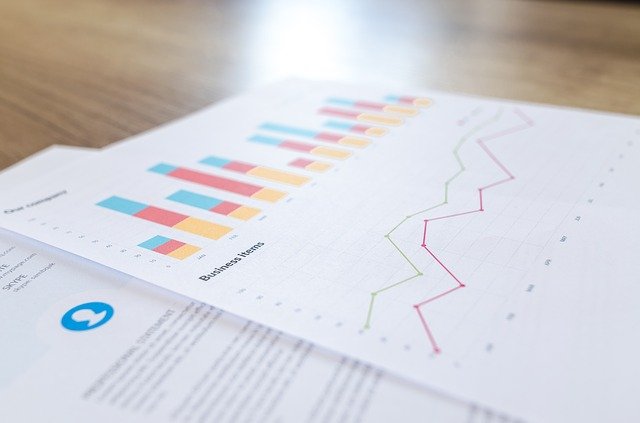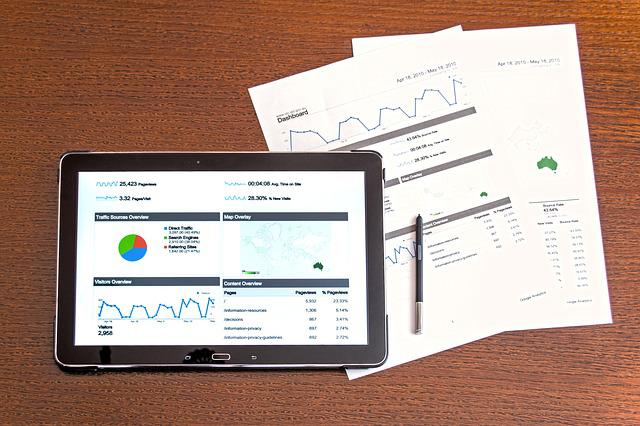Data-driven insights are an essential part of higher education marketing. Data-driven insights involve the collection, analysis, and interpretation of data to make informed decisions.
As an education marketing expert, I understand the significance of using the right marketing strategies to attract students to a higher education institution.
In today’s world, competition is fierce, and universities and colleges must find ways to stand out from the crowd to attract prospective students. This is where higher education marketing comes in.
Higher education marketing involves promoting and advertising educational institutions to prospective students to persuade them to enroll.
The importance of higher education marketing cannot be overemphasized, as it is a vital factor that helps educational institutions remain relevant and sustainable in a rapidly changing world.
Data-driven insights are an essential part of higher education marketing. Data-driven insights involve the collection, analysis, and interpretation of data to make informed decisions.

The use of data insights in higher education marketing can help institutions optimize their marketing efforts and increase their chances of success.
In this article, we will explore the importance of higher education marketing and the role that data-driven insights play in improving your marketing strategy. We will also discuss key metrics that institutions should track, tools and technologies that can aid in data analysis, and how to optimize your marketing strategy using data insights.
By the end of this article, you will have a better understanding of the importance of using data-driven insights to improve your higher education marketing strategy.
Importance of Data-Driven Insights in Higher Education Marketing
The use of data insights can help educational institutions make informed decisions about their marketing strategy, improve their marketing campaigns, and ultimately increase enrollment rates.
![Higher Education Marketing 2023 and Beyond [Detailed Analysis], Higher Education Marketing, Education Marketing, Education PR, Digital PR, Public Relations, Digital Marketing, social media, SEO for Higher Education, Digital Marketing for Higher Education](https://firdoshkhan.in/wp-content/uploads/2022/11/PPC-Advertising-Online-Marketing.jpg)
Data-driven insights help optimize marketing efforts by providing a comprehensive understanding of the target audience, their behavior, and preferences.
By analyzing data on students’ demographics, interests, and past behaviors, institutions can develop more effective marketing strategies that resonate with prospective students. This ensures that institutions are using their marketing resources in a way that is most likely to reach and engage their target audience.
To leverage data-driven insights effectively, it’s important to track key metrics for higher education marketing campaigns. These include metrics such as enrollment rates, conversion rates, cost per acquisition, and engagement metrics.
Tracking these metrics allows institutions to monitor the effectiveness of their marketing campaigns and make data-driven decisions to optimize their marketing efforts further.
One example of a successful higher education marketing campaign driven by data insights is from the University of Texas at Austin. The institution used data insights to improve its recruitment efforts for high-performing students.

By analyzing data on students’ demographics, interests, and past academic performance, the institution was able to develop targeted marketing messages that resonated with prospective students. This resulted in a 25% increase in the number of high-performing students who enrolled at the institution.
Another example of a successful data-driven marketing campaign is from the University of Washington. The institution used data insights to identify the most effective communication channels for reaching prospective students.
By analyzing data on students’ communication preferences, the institution was able to optimize its marketing campaigns to use the channels that were most likely to reach and engage prospective students. This resulted in a 30% increase in the number of applicants to the institution.
Collecting and Analyzing Data
Data collection methods for higher education marketing can include surveys, focus groups, website analytics, social media analytics, and more.

By collecting data from these sources, institutions can gain a deeper understanding of their target audience and develop more effective marketing campaigns.
To analyze data effectively, institutions can use a variety of tools and technologies, such as customer relationship management (CRM) systems, marketing automation tools, and data visualization tools.
These tools can help institutions track and analyze key metrics, such as website traffic, engagement rates, and enrollment rates. They can also help institutions create targeted marketing campaigns based on data insights.
In addition to using tools and technologies for data analysis, it’s important to ensure that the data being analyzed is accurate and reliable. This requires data cleaning and validation, which involves identifying and correcting errors or inconsistencies in the data.
This is important because inaccurate data can lead to flawed analysis and incorrect conclusions, which can ultimately undermine the effectiveness of marketing campaigns.
Data cleaning and validation involve a variety of techniques, such as removing duplicates, correcting misspellings, and identifying missing data. It’s important to conduct these processes regularly to ensure that data remains accurate and reliable.
By doing so, institutions can have confidence in the data insights they use to make decisions about their marketing strategy.
Key Insights and Metrics to Track
By tracking these metrics, institutions can gain a better understanding of the effectiveness of their marketing efforts and make data-driven decisions to improve their marketing strategy.

Some of the key metrics to track for higher education marketing include enrollment rates, conversion rates, cost per acquisition, and engagement metrics. Enrollment rates track the percentage of students who enroll after expressing interest in a program, while conversion rates track the percentage of website visitors who take a desired action, such as filling out a form or attending an event.
Cost per acquisition measures the cost of acquiring a new student, while engagement metrics track how students interact with marketing materials, such as email open rates or social media engagement.
By tracking these metrics, institutions can gain valuable insights into the effectiveness of their marketing campaigns. For example, if conversion rates are low, institutions may need to revise their website design or content to better engage potential students.
Similarly, if the cost per acquisition is high, institutions may need to adjust their targeting or messaging to reach a more cost-effective audience.
To optimize their higher education marketing strategy with data insights, institutions can use these metrics to inform decision-making.

For example, if enrollment rates are low for a particular program, institutions may need to invest in more targeted advertising or create more compelling program content to attract more students.
By using data insights to drive decision-making, institutions can create more effective marketing campaigns and improve overall student recruitment.
Case studies offer examples of how data insights have been used to optimize higher education marketing campaigns. For example, one institution used website analytics to identify which program pages were most popular among potential students, allowing them to invest more resources in those programs.
Another institution used CRM data to identify which marketing channels were most effective at attracting high-quality leads, allowing them to adjust their marketing spend accordingly.
Challenges and Opportunities
While the use of data insights in higher education marketing can be highly beneficial, there are also several challenges that institutions may face when implementing a data-driven marketing strategy.

One of the biggest challenges is collecting and analyzing the data itself. It can be difficult to collect accurate data, especially if it is spread across multiple systems and departments. Additionally, analyzing large amounts of data can be time-consuming and require specialized skills, such as data science or analytics.
Finally, ensuring the quality of the data is essential to making informed decisions, but cleaning and validating data can be a complex and resource-intensive process.
Another challenge is the need to balance data insights with other considerations, such as the unique needs and goals of the institution, the preferences and behavior of target audiences, and ethical considerations around data privacy.
Despite these challenges, there are numerous opportunities for institutions to use data insights to improve their higher education marketing. For example, data insights can be used to identify trends and patterns in student behavior, allowing institutions to make more informed decisions about program development and marketing strategies.

Additionally, data insights can be used to personalize marketing messages and deliver them through targeted channels, improving engagement and conversion rates.
Data insights can also be used to optimize marketing spend by identifying which channels and campaigns are most effective at driving conversions. By reallocating resources from underperforming channels to those that are more effective, institutions can maximize their marketing ROI.
Finally, data insights can help institutions identify and respond to emerging trends and challenges, such as changes in student demographics, shifting job market demands, or changes in regulatory requirements.
By staying ahead of these trends, institutions can position themselves as leaders in the industry and attract a wider pool of potential students.
To Conclude
The use of data insights is a valuable tool for improving higher education marketing strategies. By collecting and analyzing data, institutions can identify trends, personalize marketing messages, optimize marketing spend, and stay ahead of emerging challenges and opportunities.
To effectively implement a data-driven marketing strategy, institutions must overcome challenges such as data collection and analysis, as well as balancing data insights with other considerations.
However, the opportunities to improve marketing effectiveness and attract a wider pool of potential students make it well worth the effort.
In order to start using data insights effectively, institutions should focus on collecting accurate and high-quality data and analyzing it in a way that aligns with their unique goals and needs. By doing so, they can make more informed decisions about program development, marketing strategies, and resource allocation.
In summary, data-driven insights are an essential tool for improving higher education marketing, and institutions that embrace this approach will be well-positioned to attract and retain a diverse and engaged student body.
With the right tools, technologies, and expertise, any institution can begin using data insights to optimize its marketing strategies and stay ahead of the competition. So why not start today?



Pingback: Developing a Targeted Marketing Strategy for International Students - Firdosh Khan
Pingback: Why International Higher Education Marketing Is So Bad?
Pingback: Power of AI in PPC Campaigns for Higher Education Institutions